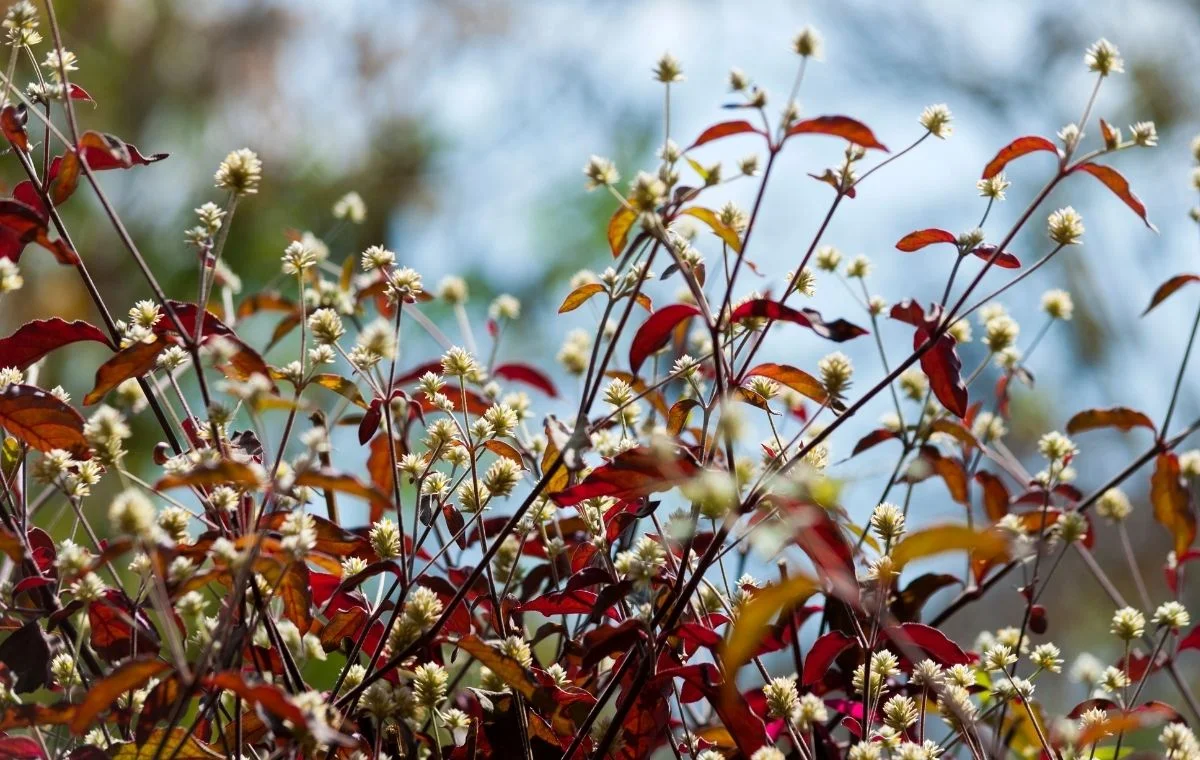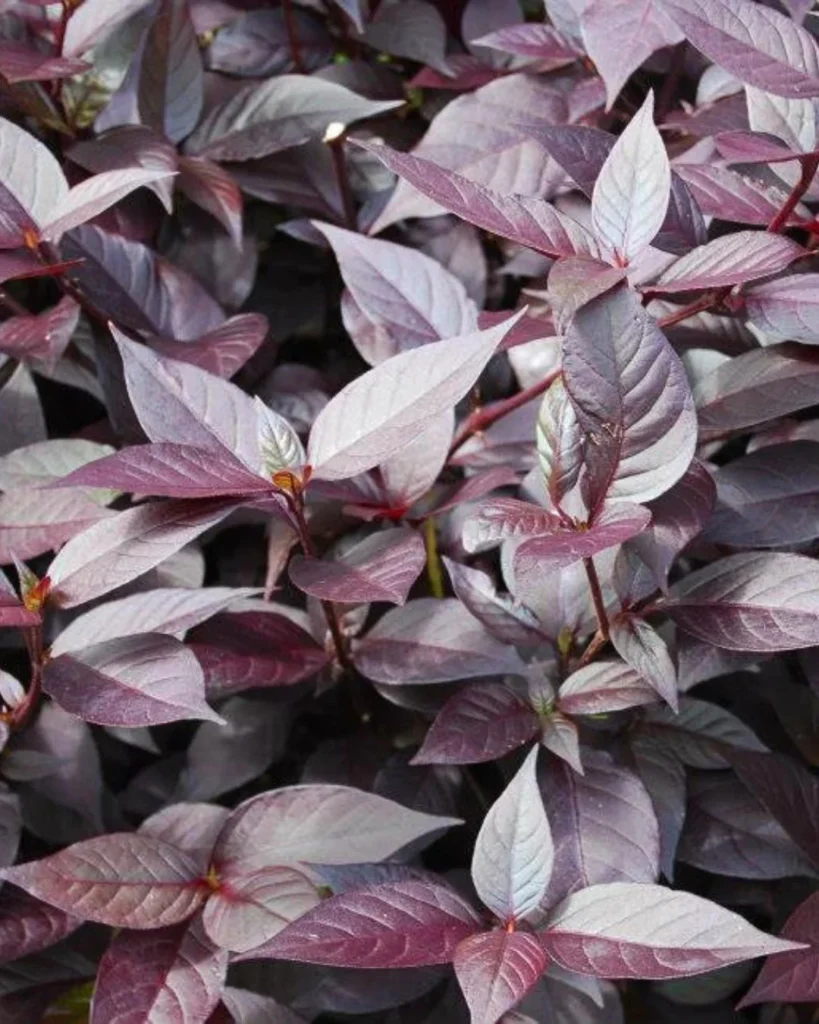Purple joyweed (Alternanthera brasiliana) is an upright herbaceous plant with both medicinal and ornamental qualities, native to tropical regions of the Americas, primarily along the Atlantic coast. It thrives in damp areas such as coastal dunes and riparian forests. As a result, it can be found from Mexico to the state of Santa Catarina in Brazil.
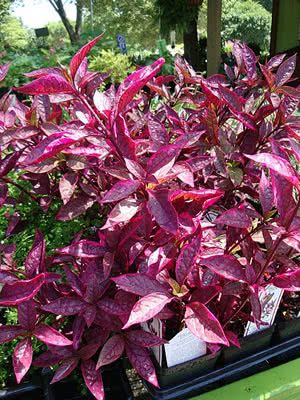
Image courtesy of Meganesia
The genus name, Alternanthera, is derived from the Latin words alternans, meaning alternating, and anthera, which refers to the anther. The alternate anthers of this genus are sterile. Meanwhile, the specific epithet, brasiliana, is related to Brazil, one of its main native habitats.
Its upright and branched growth habit is pubescent when young, gradually becoming glabrous. It showcases opposite lanceolate leaves with an acuminate tip, displaying a vibrant red color akin to deep wine, with a compact growth that quickly covers the ground. Purple joyweed blooms in winter and early spring, producing small pom-pom-like inflorescences of white-cream hue, with secondary ornamental significance.
Small brown fruits, each containing only one seed, remain hidden among the debris of the flowers. It bears a variety of common names, varying by region and cultivar, including Brazilian Joyweed, Carrapicho, and Brazilian Red Hots. The most popular cultivars in cultivation include ‘Brazilian Red Hot,’ ‘Little Ruby’, ‘Purple Knight,’ ‘Purple Prince,’ and ‘Snow Queen.’
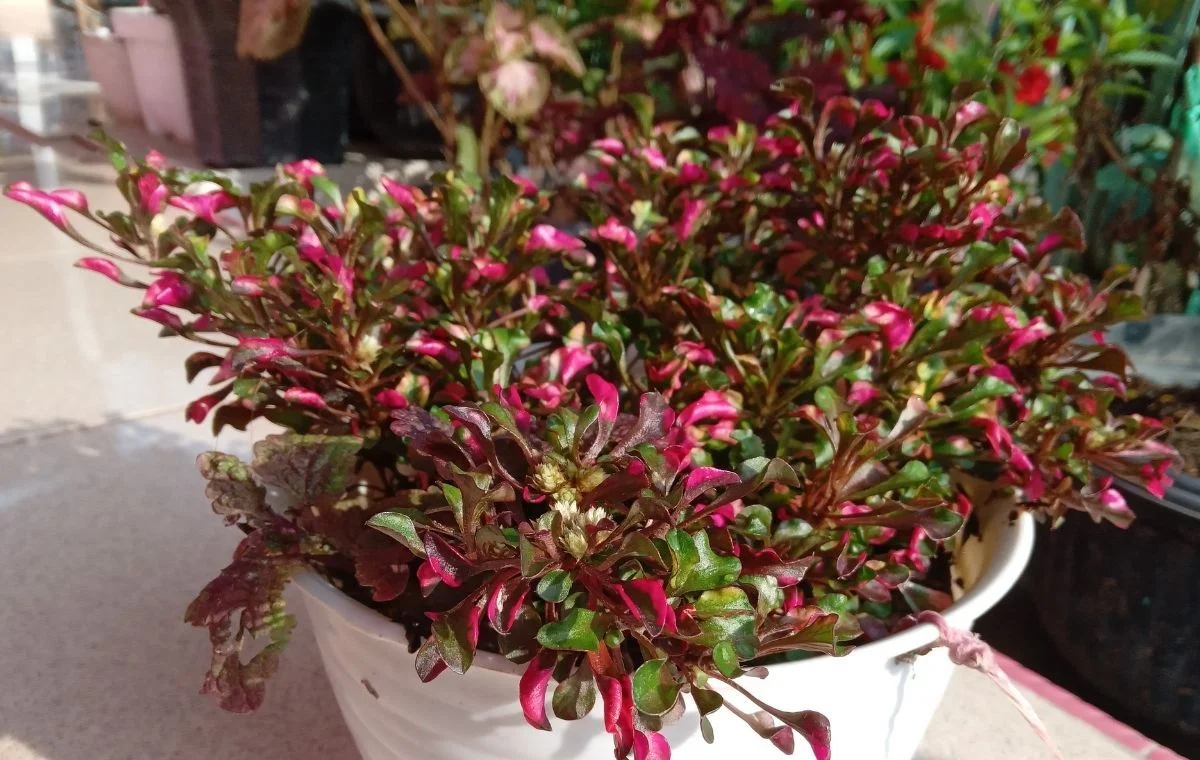
In gardens, penicillin serves as a magnificent ground cover, providing striking contrasts with other green or variegated plants. Its wine-red tones stand out in both mass plantings and heterogeneous compositions, combined with other species.
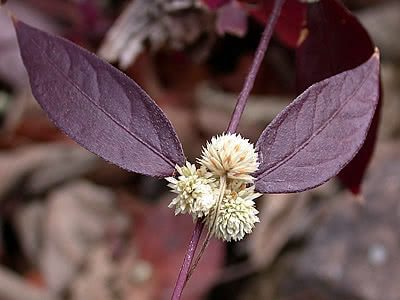
Purple joyweed is suitable for uneven terrain and slopes. It also adapts well to vertical gardens, growing and forming beautiful red patches, provided there is adequate irrigation. This plant is rugged, fast-growing, and requires minimal care. Pruning during its establishment and afterward for renewal and foliage control is recommended.
Despite being perennial, its beauty diminishes over time and requires bed renewal. Beyond its ornamental qualities, it is also a prominent medicinal plant that should not be absent from home gardens. Refer to the chart below for more information.
It should be cultivated in full sun or partial shade, in various types of soil, preferably those rich in organic matter and with good moisture retention. A distinctly tropical plant, penicillin cannot tolerate extreme cold or prolonged drought. Reddish colors are more vivid in full sunlight, and under conditions of lower light, the plant can take on a more greenish hue.
Purple joyweed can be propagated from seeds and by stem cuttings, which should be rooted in spring, either in prepared substrate or in water. Pruning, such as pinching, during the establishment of seedlings and planting beds is advised to encourage plant density.
